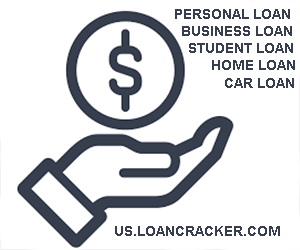Pursuing higher education can be expensive, and many students require financial assistance to help them achieve their goals. One of the most popular ways to obtain funding for education is through student loans. The government offers several types of student loans through a program called Student Loan Gov. In this article, we will explore what Student Loan Gov is, how it works, and how you can access it.
What is Student Loan Gov ?
Student Loan Gov is a website run by the U.S. Department of Education that offers federal student loans to eligible students. These loans are designed to help students pay for tuition, room and board, textbooks, and other educational expenses.
How Does Student Loan Gov Work?
Student Loan Gov offers several types of federal student loans, including Direct Subsidized Loans, Direct Unsubsidized Loans, Direct PLUS Loans, and Direct Consolidation Loans. These loans have different interest rates and repayment terms, and eligibility varies depending on the type of loan.
To apply for a federal student loan, you must first complete the Free Application for Federal Student Aid (FAFSA). The FAFSA is used to determine your eligibility for federal student aid, including grants and loans. Once you have completed the FAFSA, you can then apply for a federal student loan through Student Loan Gov.
If you are approved for a federal student loan, the funds will be sent directly to your school to pay for your education expenses. You will then be responsible for repaying the loan, typically starting six months after you graduate or leave school.
4 Types of Federal Student Loans Offered by Student Loan Gov:
Direct Subsidized Loans:
- Available to undergraduate students with demonstrated financial need.
- The government pays the interest on the loan while you are in school and for six months after you leave school.
Direct Unsubsidized Loans:
- Available to undergraduate and graduate students.
- Interest accrues while you are in school and is added to the loan balance.
Direct PLUS Loans:
- Available to graduate students and parents of dependent undergraduate students.
- Requires a credit check and may require a co-signer.
- Interest accrues while you are in school and is added to the loan balance.
Direct Consolidation Loans:
- Allows you to combine multiple federal student loans into one loan.
- Can simplify repayment and potentially lower your monthly payment.
Latest Updates about Student Loan Forgiveness:
In recent years, there has been a growing movement to address the student loan debt crisis in the United States through various forms of student loan forgiveness. In response, the government has implemented a number of programs and policies aimed at providing relief to borrowers.
Some of these programs include Public Service Loan Forgiveness (PSLF), Income-Driven Repayment (IDR) plans, and forgiveness for borrowers with Total and Permanent Disability (TPD).
However, the eligibility criteria and requirements for these programs can be complex and confusing, and there is still much work to be done to provide meaningful relief to those burdened by student loan debt.
What is Student Loan Forgiveness Application Process ?
To apply for student loan forgiveness, borrowers must typically meet certain eligibility criteria and follow a specific application process. The requirements and process can vary depending on the program or policy being applied for.
For example, borrowers seeking Public Service Loan Forgiveness (PSLF) must work full-time for a qualifying employer while making 120 qualifying payments on an eligible loan. Those seeking forgiveness through Income-Driven Repayment (IDR) plans must submit an application and recertify their income and family size annually.
It’s important for borrowers to carefully review the requirements and follow the application process closely to ensure they are eligible and have the best chance of success in receiving loan forgiveness.
FAQs:
Q: Who is eligible for federal student loans through Student Loan Gov?
A: To be eligible for federal student loans, you must be a U.S. citizen or eligible non-citizen, enrolled in an eligible program at an accredited school, and maintain satisfactory academic progress.
Q: How much can I borrow with a federal student loan?
A: The amount you can borrow depends on several factors, including your financial need, the cost of attendance at your school, and your grade level.
Q: What is the interest rate on federal student loans?
A: The interest rate on federal student loans varies depending on the type of loan and when it was disbursed. You can find current interest rates on the Student Loan Gov website.
Q: How do I repay my federal student loans?
A: You will typically have a six-month grace period after you leave school before you are required to start repaying your federal student loans. You can choose from several repayment plans, including standard repayment, income-driven repayment, and extended repayment.
Conclusion:
Pursuing higher education can be costly, but federal student loans through Student Loan Gov can help make it more affordable. By understanding what Student Loan Gov is, how it works, and the types of loans available, you can make informed decisions about how to finance your education. Remember to complete the FAFSA to determine your eligibility for federal student aid, and be mindful of your repayment options once you have graduated or left school. With the right information and resources, you can make your education dreams a reality with the help of Student Loan Gov.





